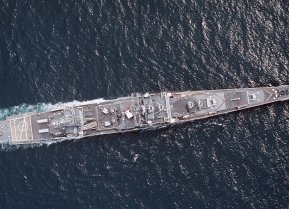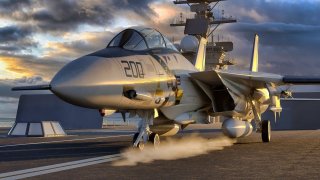Did the F-14 Tomcat Really Deserve to Be Retired?
The Grumman F-14 Tomcat, immortalized by the 1986 film Top Gun, had its final official flight on September 22, 2006, at Naval Air Station Oceana. Despite its legendary status, particularly among Generation X and aviation enthusiasts, the Tomcat’s retirement was driven by cost and operational inefficiencies compared to newer jets like the F/A-18 Super Hornet.
What You Need to Know: The Grumman F-14 Tomcat, immortalized by the 1986 film Top Gun, had its final official flight on September 22, 2006, at Naval Air Station Oceana. Despite its legendary status, particularly among Generation X and aviation enthusiasts, the Tomcat’s retirement was driven by cost and operational inefficiencies compared to newer jets like the F/A-18 Super Hornet.
-While Hollywood can suspend disbelief, U.S. military decisions rely on hard facts.
-The F-14’s legacy lives on, but its role in combat was eclipsed by more modern, flexible aircraft, making its retirement inevitable despite the nostalgic pull of Top Gun's Maverick.
Did the U.S. Navy Retire the F-14 Tomcat Too Soon?
The official final flight of the Grumman F-14 Tomcat occurred on September 22, 2006, at Naval Air Station Oceana and was flown by Lt. Cmdr. Chris Richard and Lt. Mike Petronis as RIO in a backup F-14 after the primary aircraft experienced mechanical problems. That alone should answer the question that was asked on various online forums whether the U.S. Navy retired the F-14 Tomcat too soon.
A follow-up question is whether it was believable that late 50-something Tom Cruise could still pull off being a combat pilot in Top Gun: Maverick. We should remember that Hollywood movies are built around the suspension of disbelief, whereas U.S. military decisions are based on fact even if the judgment may seem all that sound at the time.
In the case of the F-14 Tomcat, it came down to simple math. The cost and operational flexibility of the Tomcat simply didn't add up.
Harrison Kass, writing for The National Interest, recently argued that the F-14's transcendent status came not from its combat performance – even if it did perform admirably enough – but from the 1986 film Top Gun. In other words, there is a lot of nostalgia from aviation geeks about that aircraft because Tom Cruise looks like a freakin' bad*** flying it as Pete "Maverick" Mitchell.
The film made Cruise a superstar and proved he could do action, while Rain Man and The Color of Money showed he had range as a dramatic actor. It didn't hurt that the film had a reasonably good soundtrack, and even today its theme song gets regular airplay on Sirius XM's 80s on 8 channel, while "Danger Zone" even sort of made a huge dork like Kenny Loggins seem cool. OK, it caused Berlin to break up, and "Take My Breath Away" is far from their best song, but you get the point.
Living in the 80s!
Generation Xers (this writer included) and younger Baby Boomers have a continued fascination with the 1980s and that certainly played into it. The F-14 Tomcat is timeless, almost like those 80s bands that are still going – at least until you see Duran Duran or Berlin on tour, and then you suddenly realizing that skinny ties, parachute pants, and shoulder pads are best left in the past.
So what does any of this have to do with the F-14 Tomcat?
Well, as Harrison Kass also noted, the nostalgia for the F-14 may be due to the 1980s film, the fact remains it first flew in the 1970s and made its deployment in 1974. In other words, the Tomcat was born while America was still embroiled in the Vietnam War – and that is when we Gen Xers were being conceived. Thus the soundtrack for the Tomcat really should be early Led Zeppelin, late-era Beatles, and The Who.
Cool and still classic those bands may be, but there are now almost as many dead members of those groups as there are living members.
This serves as a reminder that things get old, time moves and what was once cutting-edge, is simply past its prime. Though old rockers can still rock – case in point Keith Richards of the Rolling Stones is President Joe Biden's age – old aircraft are just old, and not as capable as newer fighters.
Finally, F-15 Eagle and F-16 Fighting Falcon have intend been steadily improved, while the F-14 didn't receive the same treatment. But it could be argued that with the arrival of the F/A-18 Hornet and later the Super Hornet, the F-14 wasn't needed. Perhaps it was just an old cat that couldn't be taught new tricks.
Author Experience and Expertise: Peter Suciu
Peter Suciu is a Michigan-based writer. He has contributed to more than four dozen magazines, newspapers, and websites with over 3,200 published pieces over a twenty-year career in journalism. He regularly writes about military hardware, firearms history, cybersecurity, politics, and international affairs. Peter is also a Contributing Writer for Forbes and Clearance Jobs. You can follow him on Twitter: @PeterSuciu.
You can email the author or contact us here: [email protected].


